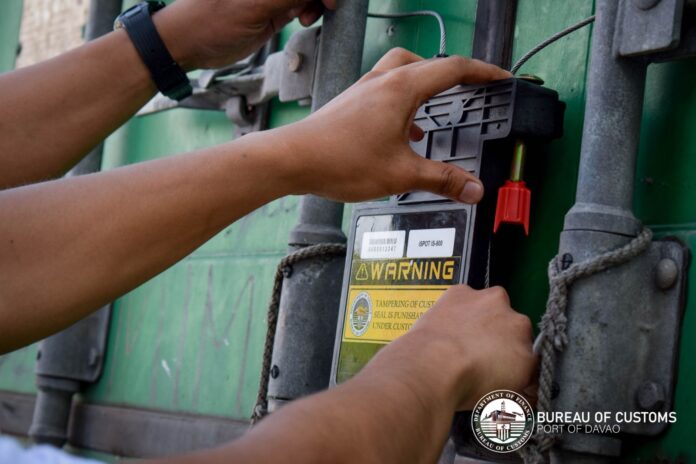
-
The Bureau of Customs will implement starting this month the Electronic Tracking of Containerized Cargoes (E-TRACC) system for export shipments originating from economic zones in Cavite and Laguna
-
Under a BOC order, all containers for exports from eight economic zones in Cavite and Laguna bound for the Port of Manila and Manila International Container Port must be fitted with an electronic customs seal
-
The system will be implemented progressively until November 2021
-
BOC officers will not approve any customs exports single administrative document without an E-TRACC booking
-
A separate memo will cover implementation of E-TRACC system for exports originating from other economic zones
The Bureau of Customs (BOC) will implement the Electronic Tracking of
Containerized Cargoes (E-TRACC) system for export shipments originating from economic zones in Cavite and Laguna beginning September until November this year.
In Assessment and Operations Coordinating Group Memo No. 493-2021, all containers for export coming from eight economic zones in Cavite and Laguna bound for the Port of Manila and Manila International Container Port (MICP) must be fitted with an electronic customs seal (ECS).
The schedule of implementation is as follows:
- September 20—Light and Industry Science Park I and II, Laguna International Industrial Park, Carmelray Industrial Park II, and Calamba Premiere International Park
- October 4—Cavite Economic Zone I
- October 18—Laguna Technopark, Inc.
- November 2—Cavite Economic Zone II
BOC export examiners/appraisers or any customs officers authorized to process export clearance will not approve any customs exports single administrative document (SAD) without an E-TRACC booking, as prescribed under Customs Memorandum Order No. 04-2020, which implements the system.
READ: BOC orders e-tracking of cargoes in transit
E-TRACC is a web-based system launched by BOC last year to track inland movement of containerized cargoes during transit and transfer to other customs territories and facilities. It allows BOC to track, monitor and audit the location and condition of cargoes, as well as obtain real-time alarms on diversion and tampering of cargoes.
Under CMO 04-2020, an ECS is required during the transfer of cargo to a container yard/container freight station or other customs facilities and warehouses; transit of cargo bound for Free Zones, inland customs office, depots, or terminals; transit to customs bonded warehouse (CBWs); export of cargo from Free Zones, inland customs office, depots or terminals, and CBWs to port of loading; and transfer of shipments subject to further verification and/or monitoring.
For export shipments, the declarant should file an export SAD (E-SAD) through BOC’s Electronic-to-Mobile (E2M) System.
The exporter or its authorized representative should book the trip at least one hour prior to exit from the economic zone premises. The declarant must pay the trip per container using the E-TRACC booking system, which can be accessed online.
BOC’s Export Division will check the trip booking in the E-TRACC System before approval of E-SAD.
Prior to stuffing of cargo into the container, the declarant should submit a request for a schedule of electronic sealing in the E-TRACC booking system. Schedule of sealing is from 8a.m. to 8p.m., Monday to Friday. Beyond this schedule, a formal request for overtime must be submitted for approval.
After stuffing and closure of the container door by the export examiner or authorized customs examiner and economic zone representative, the authorized personnel affixes the ECS at the designated exit gate.
Economic zones covered by the implementation should designate an exit gate– preferably one gate–for control and monitoring purposes.
Trucks carrying export containers should exit only through designated exit gates for export shipments to enable authorized personnel on duty to check the presence of ECS in the container. If the container is not affixed with an ECS, the export examiner may authorize the personnel of the E-TRACC service provider to install the ECS following the standard procedure.
Exporters can check the status of each trip booked and track the container during its trip.
The implementation of E-TRACC for exports of other economic zones will be covered by a separate memo.
READ: BOC eyes E-TRACC application in airports
Aside from exports, E-TRACC has been gradually implemented across various sea ports and destinations, and is already in place for import shipments from the Port of Manila and MICP going to the Philippine Economic Zone Authority economic zones and other Freeports; from other ports such as Davao and Subic and the sub-port of Mariveles, Bataan; and for inter-island shipments. – Roumina Pablo




